Taste of Ethiopian Rosa Coffee introduce the flavor characteristics of Ethiopian Rosa Village Coffee
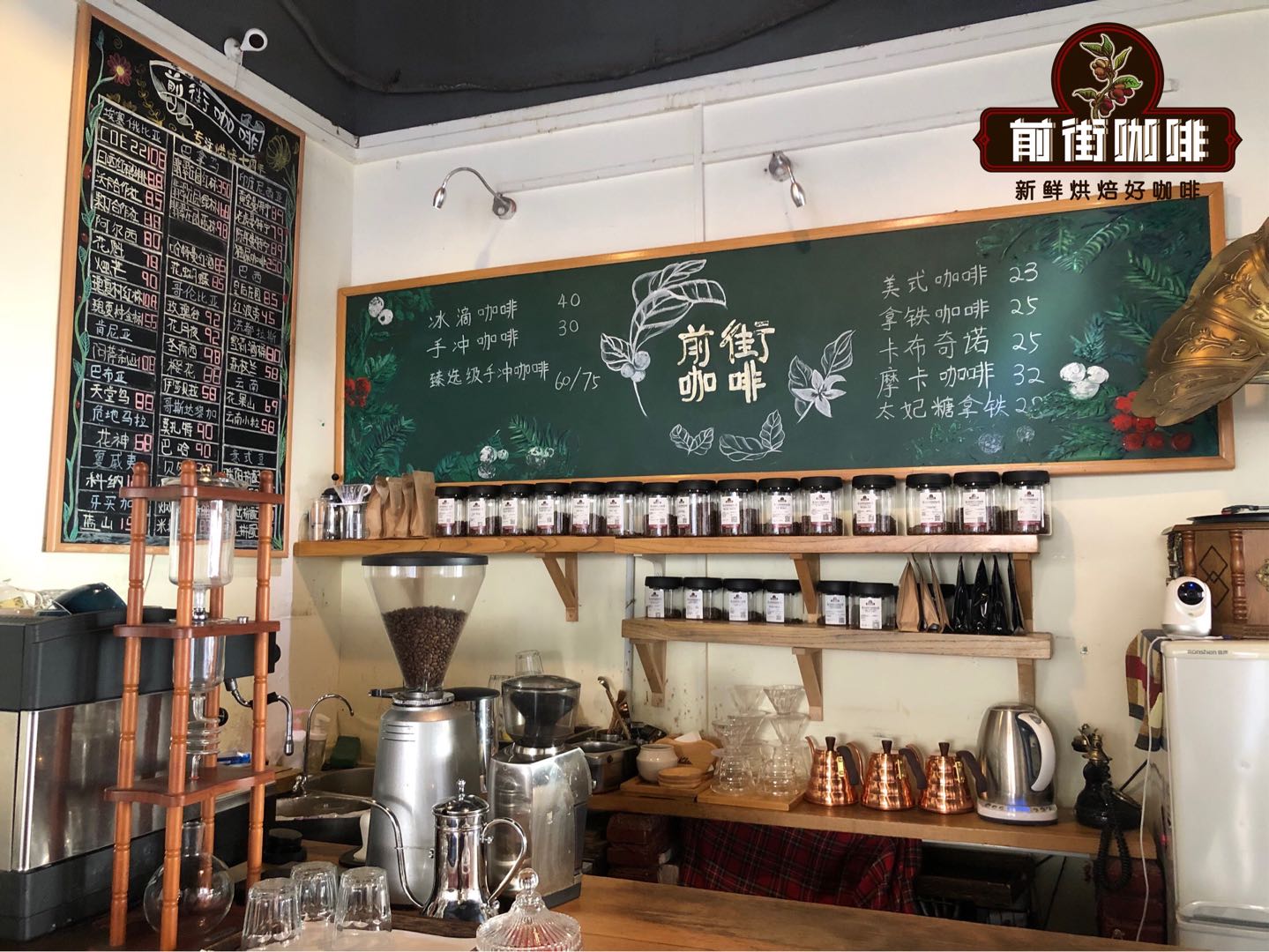
Professional coffee knowledge exchange more coffee bean information please follow the coffee workshop (Wechat official account cafe_style)
In the past, when some friends who wanted to taste rose summer coffee came to the front street coffee shop, the baristas in front street would carefully ask, "do you mean the rose summer in the rose summer village or the rose summer in Panama?" Everyone will be foolishly confused about the difference between these two rosy summers. Nowadays, the Panamanian rose summer is becoming more and more famous. when someone refers to it, it generally refers to the Panamanian rose summer. And the rosy summer of Rose Xia Village is forgotten in a corner. Today, Qianjie Coffee is going to tell you about the ancestor of the Panamanian rose summer, the rose summer of Ethiopia.
First of all, let's talk about the communication history of Rose Xia.
The variety Geisha was first discovered in the Rosy Forest of Ethiopia in 1931, sent to the Coffee Institute in Kenya in 1932, transferred to Tanzania and Uganda in 1936, introduced to Colombia in 1953 and introduced to Panama in the 1960s.
However, as early as 90 years ago, when the rose variety was discovered, the Ethiopian official archives rated its flavor as "its taste is not good", and the rose variety came to Panama after more than 40 years of keeping a low profile before it came to prominence in the best Panama competition (Best of Panama, BOP) in 2003, won the BOP championship in 2004, and only after expert identification, it was found that it was an Ethiopian rose variety.
Brief introduction of Origin [Ethiopia]

Speaking of Ethiopia, coffee has been integrated into the social structure and cultural economy of the country for hundreds of years. In Ethiopia, coffee is their culture and an important source of income for most people. The country is not only the birthplace of rosettes, but also the world's recognized birthplace of coffee. It is highly respected in the boutique coffee market, and Ethiopian coffee can be found in any boutique cafe, even in Qianjie.
Ethiopia is mainly divided into nine major producing areas: Yegasuefei, Sidamo, Lim, Hara, Jinma, Irubab, Kinbi and Lecchti, Tibbi and Bebeca, and the banks of Lake Tana. [Benchmaji area]

The Bench Maji Zone area, also known as the Bebeca area, is a district under the southern ethnic states, and the city of Bebeka Town is the capital of the district. Benchmaji covers an area of 23442.76 square kilometers, with Sudan to the west, Gambera to the northwest and South Omo to the east. There is a famous manor in this area-Gesha Village Coffee Estate, whose coffee trees are said to be found in the wild forests of Benchmaji. [Guoxia Village Manor]

In 2007, documentary director Adam Overton and his photographer wife Rachel Samuel filmed a documentary about Ethiopian coffee at the request of the Ethiopian government. During filming, they came into contact with the Gera forest in Bench Maji, reacquainted with the land of Ethiopia, and came up with the idea of building their own coffee estate and brand.
In 2009, the Adam couple were lucky to meet the famous mule owner and BOP judge Willem Boot, while Willem Boot's idea of "returning to Ethiopia to find the birthplace of Rose Summer" also provided an opportunity for the couple. In 2011 they returned to Benchmaji, where several areas are known as Rosa Village, where native Rosa varieties are most likely to be found.
Adam followed Willem on an expedition in the surrounding forest and found a variety of wild coffee trees in a jungle surrounded by dense forests, the most surprising of which was the native Rosa species. They collect seeds from native rose summer trees, screen them, and plant them in Rosa Village. And decided to set up a manor here, named Rosa Village Coffee Manor (Gesha Village Coffee Estate).
Ruoxia Village Manor covers an area of about 471 hectares, coffee cultivation area of about 320 hectares, brown red loam soil. The planting density was maintained at 7000 trees / ha.

There are 8 farms under the Rose Xia Village Manor:
In Bangi (54 hectares, 1911-2001 meters), most of the estate's staff come from a community called "Bangi-Chichuru" to the east of the farm. The coffee produced in this area has aromas of honeysuckle and spices, with intense aromas of dark chocolate, Mexican mole spices, berries, black tea, black sugar and blackcurrant.
LDimma (28.7ha, 1966-2019 m) is named after Dimma, a famous gold mining town located north of the farm. The coffee produced on this plot has fresh floral and drupe aromas, sharp and sober citrus acid.
Gaylee (34.8ha, 1916-1982 m), connected to the southeast by the Kebele community, is officially named "Gaylee-Gesha", near the Yetgordon River, the water source of Rosa Village. The fruity and spicy aromas of coffee produced in this plot are closely combined, with strong sweet aromas of almonds, lemon grass and hibiscus, mixed with aromas of jasmine and drupes.
Oma (67.6ha, 1931-2040 m) is named after the religious leader of the respected and beloved Meanit region. The coffee produced in this plot has strange aromas of red currant and jasmine, with the fruit characteristics of peach, apricot, candied fruit, melon and Wenzhou mandarin, and the finish is as sweet as honey.
Narsha (5.3ha, 1963-1977 m), located in the south of the estate of Rosa Village, is named after a rich tree on the farm. This plot produces coffee honeysuckle, yellow fruit, limes, dark chocolate, peaches, apricots and roses with fresh acidity and a lingering finish of bergamot.
Surma (45.9ha, 1909-2063 m), overlooking a paradise-like valley, is named after the herdsmen "Surma" who live in the lowlands of the southwest. The coffee produced on this plot has soft aromas of jasmine and Damascus roses, fruit flavors of strawberries, ripe watermelons and apples, and a hint of spice.
Shewa-Jibabu (48.5ha, 1973-2069 m), located in the north of the estate, is named after a mountain near the farm and the kebele community where some of the employees come from. The coffee produced in this area has the flavors of spices, strawberries, ripe peaches, papaya, flowers, dark chocolate, tamarind, orange and bergamot.
Shaya (36.5ha, 1926-2069 m), named after the head of the Meanit region. The coffee produced on this plot has aromas of jasmine, bergamot and orange. Intense aromas of dark chocolate, orange juice, iced cherries, molasses, lemons and berries with sweet flavours of red apples.
Coffee bean variety
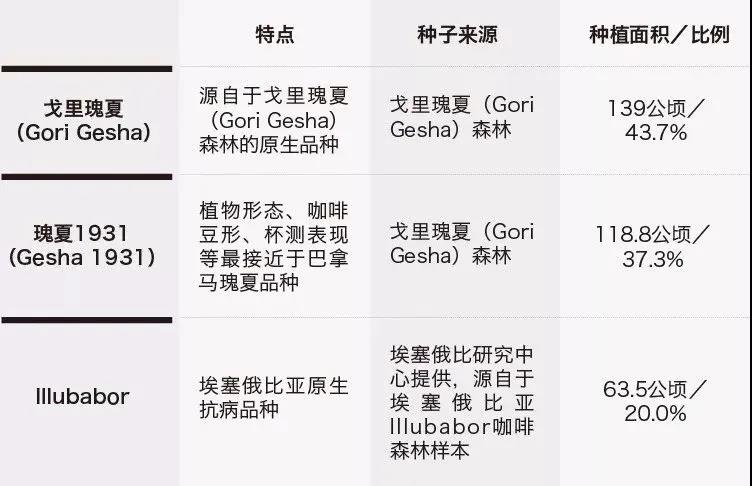
The rose summer in Panama and the rose summer in the village are both called rose summer, but the varieties of rose summer in these two places are very different. There are three main varieties in Rose Summer Village: Gori Rosa Gori Gesha (GG), Rose Xia 1931 Gesha 1931 (G31) and Illubabor Forest 1974 (IF). Gori Rosa Gori Gesha (GG)
This variety replicates the genetic diversity in Gori Gesha coffee forest. Rosa 1931 Gesha 1931 (G31)
The combination of varieties with different forests is very similar to Panamanian Rosa, which is screened by observing its plant type, bean-shaped appearance, mesh size and cup flavor. Illubabor Forest 1974 (IF)
It was found during an expedition from 1974 to the Illubabor Forest, and a variety with antibodies was later developed by the Ethiopian Research Center.
Grading system
There is a strict grading system in the manor of Guoxia Village, which is competitive bidding, gold bid, red bid, green bid and Chaka batch.
[bidding lot]
Accounting for only 3.7% of the annual output of Rose Xia Village, the top batch of the carefully selected manor can only be obtained through the global bidding of 2018 Rose Xia Village Coffee Manor. The cup test score of the 2018 bidding batch is 88.15-92.67 points, which is divided into champion selection (Champion's Reserve) and manor selection (Farm Reserve).
[gold standard batch]
Jinbiao batch of coffee accounts for about 10% of the annual output of Rose Xia Village Manor, the taste is complex, very rare. These rare coffees are the top coffee at the Rosa Village Manor except for bidding batches.
Many baristas will choose gold standard batches as their competition beans, and bakers with high quality requirements will also purchase, with complete traceability, outstanding flavor and high complexity of each batch.
The gold mark of Rose Xia Village of Qianjie Coffee is from lot 059 of Oma.

[red label batch]
The coffee beans of the red standard batch account for about 15% of the annual output of the Ruoxia village manor, with complete traceability, the cup test score is more than 88 points (sca standard), has the typical Rosa village flavor, the flavor intensity and complexity are slightly weaker than the gold standard batch, and it is a single product batch with very high performance-to-price ratio.

[green label batch]
The green label batch comes from a single plot of Guoxia Village Manor and is a batch of a single variety. The green label batch provides complete traceability information for each batch number, including the name of the farm plot, the variety of coffee and the date of processing.

[CHAKA batches]
Chaka batches are mixed with coffee from all the plots on the estate and throughout the production season. Chaka batch of coffee has two treatments: sun treatment and water washing treatment, including three coffee varieties in Rose Summer Village Garden, namely Rose Summer 1931, Gori Rose Summer and illubabor.

Qianjie coffee brewing parameters
Coffee powder: 15 g ratio: 1:15 Water temperature: 90 degrees Celsius Grinding: 0.85mm sieve pass rate 80% filter cup: Hario v60 # 01 filter cup

Cooking process: the first stage injects 30 grams of water for 30 seconds, the second stage injects 95 grams of water (125 grams indicated by the electronic scale), about 1 minute completes the injection, and the third stage injects 100 grams of water (225 grams shown by the electronic scale). About 1 minute and 30 seconds.
Extraction time: 2 minutes, remove the filter cup to finish cooking
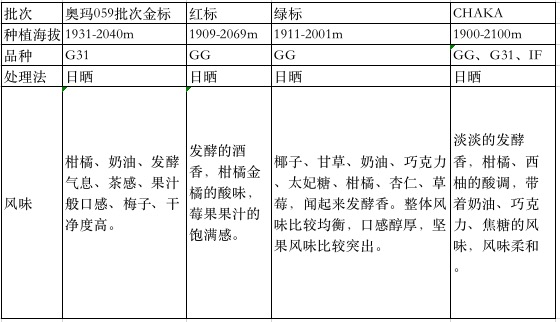
For more boutique coffee beans, please add private Qianjie coffee on Wechat. WeChat account: kaixinguoguo0925
Important Notice :
前街咖啡 FrontStreet Coffee has moved to new addredd:
FrontStreet Coffee Address: 315,Donghua East Road,GuangZhou
Tel:020 38364473
- Prev
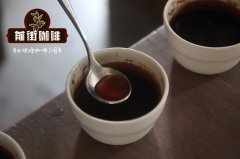
Description of the flavor characteristics of washed Yejia Coffee Ding Ding beans
Thousands of years of planting history and processing tradition in Ethiopia have created high-quality washed Arabica beans, and Yegashafi is synonymous with one of Ethiopia's fine washed coffee. It has been a wetland since ancient times. The ancient saying "Yirga" means to settle down and "Cheffe" means a wetland. Therefore, the mode of production and flavor of coffee here are outstanding, and it has become popular in Africa.
- Next
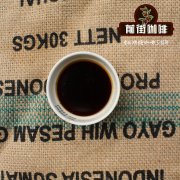
Introduction to the Flavor characteristics of Blueberry Manor in Guatemala
Guatemala El Morito Guatemala Blueberry Manor country: Guatemala production area: new Oriental altitude: 1550-1800m treatment: sun treatment Grade: SHB Variety: Pacamara Guatemala is located in Central America, where the geographical environment is unique, with North America in the north and South America on the south. Facing the Caribbean Sea and the Gulf of Mexico, the climate is relatively humid
Related
- Detailed explanation of Jadeite planting Land in Panamanian Jadeite Manor introduction to the grading system of Jadeite competitive bidding, Red bid, Green bid and Rose Summer
- Story of Coffee planting in Brenka region of Costa Rica Stonehenge Manor anaerobic heavy honey treatment of flavor mouth
- What's on the barrel of Blue Mountain Coffee beans?
- Can American coffee also pull flowers? How to use hot American style to pull out a good-looking pattern?
- Can you make a cold extract with coffee beans? What is the right proportion for cold-extracted coffee formula?
- Indonesian PWN Gold Mandrine Coffee Origin Features Flavor How to Chong? Mandolin coffee is American.
- A brief introduction to the flavor characteristics of Brazilian yellow bourbon coffee beans
- What is the effect of different water quality on the flavor of cold-extracted coffee? What kind of water is best for brewing coffee?
- Why do you think of Rose Summer whenever you mention Panamanian coffee?
- Introduction to the characteristics of authentic blue mountain coffee bean producing areas? What is the CIB Coffee Authority in Jamaica?

